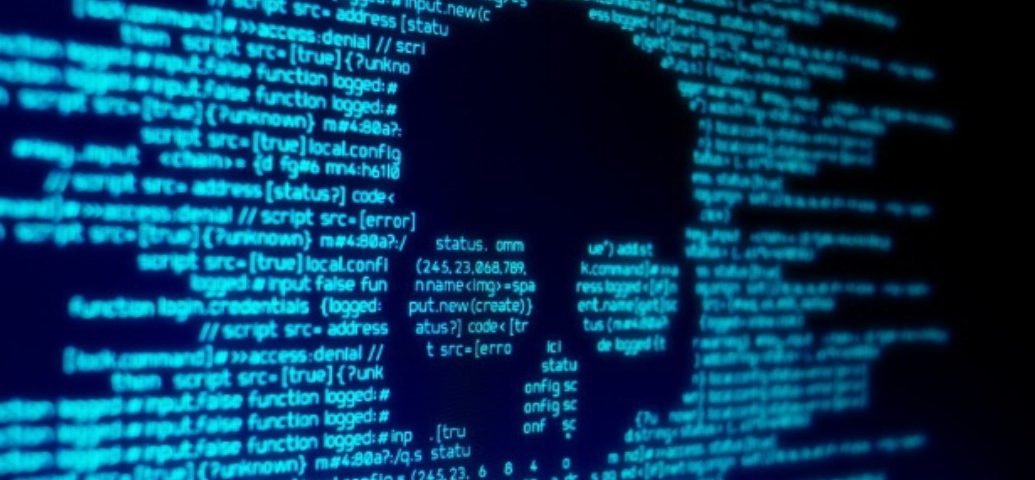What Are Internet Threats And Cyber Threats

Internet threats or cyber threats are a class of network safety that takes a chance that might cause an unwanted occasion or activity through the web.
Internet threats are made conceivable by end-client weaknesses, web administration designers/administrators, or web administrations themselves. Notwithstanding the plan or cause, the outcomes of cyber threats might harm the two people and associations.
This term applies typically to — yet isn’t restricted to — internet threats in the accompanying classifications:
Private internet threats – sway sub-networks associated with the more extensive worldwide web. Standard models can incorporate home Wi-Fi or ethernet organizations, corporate intranets, and public intranets.
Host threats – sway explicit organization has gadgets. The term frequently alludes to corporate endpoints and individual gadgets, like cell phones, tablets, and traditional PCs.
Web server threats – sway devoted equipment and programming that serve web framework and administrations.
What are internet threats?
Internet threats uncover individuals and PC frameworks to hurt on the web. An expansive extent of risks squeezes into this classification, including significant cyber threats like phishing and PC infections. Different threats, such as separate information robbery, can likewise be viewed as a gathering component.
Cyber threats are not restricted to online action but instead eventually include the web at some stage for causing hurt. While not all web dangers are made purposely, many are expected — or have the potential — to cause:
- Access disavowal: Avoidance of section to a PC as well as organization administrations.
- Access securing: Unapproved or undesirable passage into a private PC and additionally network administrations.
- Unapproved or undesirable utilization of PC as well as organization administrations.
- I am uncovering private information without authorization, for example, photographs, account accreditations, and delicate government data.
- Unapproved or undesired changes to a PC as well as organization administrations.

As of late, the scene of web dangers has developed fundamentally. Innovations like intelligent gadgets and versatile high-velocity organizations have been considered a consistently associated vector of malware, misrepresentation, and different intricacies. Likewise, web reception in regions like correspondences and efficiency through the Internet of Things (IoT) have outperformed client security mindfulness.
As we depend more on the web for day-to-day living, it will save dramatically ascending as an appealing assault choice for vindictive gatherings. Accommodation and an absence of mindfulness around web use are among the top worries that keep presenting new cyber threats to protection and security.
While targets are ordinarily PC-based, human casualties eventually experience the enduring impacts of Internet threats.
How do cyber threats works?
Whenever an internet threat emerges, certain conditions adjust to make it a concern mark.
To be specific, there are a couple of fundamental parts to any cyber threats:
- Threat thought processes convince a deliberate cyber threats specialist or objective to hurt. Some danger specialists don’t act purposefully or independently and may be missing thought processes.
- Internet threats specialists are any person or thing that can adversely affect the web either as a danger vector or an objective itself.
- Weaknesses incorporate any human conduct shortcoming, innovation frameworks, or different assets that can prompt a harmful exploit or episode.
- Threats results are the adverse consequences of an internet threats specialist acting against at least one weakness.
As these parts collaborate, a danger turns into an assault on PC frameworks. Threats intentions can incorporate any accompanying: monetary, survey, data, counter, damage; from there, the sky is the limit.
Danger specialists usually are individuals with vindictive aims. Likewise, specialists maybe whatever is maneuvered toward acting for the first danger specialist. Be that as it may, some cyber threats specialists— like damaging nature occasions — work altogether without human mediation.
The sorts of internet threats specialists include:
Non-human specialists: Examples incorporate malignant code (infections, malware, worms, scripts), catastrophic events (climate, topographical), utility disappointment (electrical, telecom), innovation disappointment (equipment, programming), and actual risks (heat, water, sway).
Deliberate human specialists: Based on pernicious expectation. Can be inner (workers, workers for hire, family, companions, associates) and outer (expert and novice programmers, country state entertainers and organizations, contender partnerships)
Inadvertent human specialists: Based on human mistake. Like purposeful cyber threats, this type can incorporate interior and outside specialists.
Carelessness based human specialists: Based on imprudent ways of behaving or security oversights. Once more, this class can likewise incorporate interior and outer specialists.
Weaknesses might be points of shortcoming where a person or thing can be controlled. Weaknesses can be viewed as web threats and a worry that empowers different dangers. This region commonly incorporates some human or specialized shortcomings that can prompt infiltration, abuse, or destruction of a framework.
Danger results might prompt private information, mislead clients, disturbed PC framework use, or hold onto access honors. Web dangers frequently result in, yet are not restricted to, causing:
Notoriety harm: Loss of trust from clients and accomplices, web crawler boycotting, embarrassment, criticism, etc.
Activities disturbance: Operational personal time, access disavowal to electronic administrations, for example, websites or message loads up, and so forth.
Robbery: Financial, personality, delicate buyer information, and so on.
Cybercriminals will utilize practically any weakness inside a working framework (OS) or an application to direct an assault. Nonetheless, most cybercriminals will foster web dangers that purposely focus on the absolute most normal working frameworks/applications, including:
Java: Because Java is introduced on more than 3 billion gadgets (that are running under different working frameworks), exploits can be made to target explicit Java weaknesses on a few distinct stages/working frameworks.
Adobe Reader: Although many assaults have designated Adobe Reader, Adobe has carried out apparatuses to safeguard the program against exploit action. Be that as it may, Adobe Reader is as yet a typical objective.
Windows and Internet Explorer: Active endeavors target weaknesses that were distinguished as far back as 2010 – incorporating MS10-042 in Windows Help and Support Center, and MS04-028, which is related to the unfair treatment of JPEG documents.
Android: Cybercriminals use exploits to acquire root honors. Then, at that point, they can accomplish practically unlimited authority over the designated gadget.
How do internet threats spread?
The most unsettling internet threats venture to every web part to go after additional frameworks. These danger specialists frequently utilize human control and specialized orders to arrive at their objectives.
Internet threats of this nature utilize the web’s numerous interchanges channels to spread. More considerable dangers use the world wide web to answer risks, while additional designated risks may straightforwardly penetrate private organizations.
Regularly, these dangers are dispersed through electronic administrations. Malevolent entertainers like to put these dangers where clients will frequently draw in with them. Public sites, online entertainment, web gatherings, and email are, in many cases, ideal for spreading cyber threats.
Clients are impacted when they draw in with vindictive URLs, downloads, or provide delicate data to sites and message shippers. This commitment may likewise set off disease and spread cyber threats to different clients and organizations. It’s normal for guiltless clients to become cyber specialists themselves unwittingly.
How to spot cyber threats?
Notwithstanding the ceaseless extent of online risks, recognizing a few general qualities of internet threats is conceivable. Be that as it may, recognizing a web danger requires a cautious eye to get hidden subtleties.
Some cyberthreats are obviously of worry to web framework equipment, like water and intensity. While those are simpler to detect, others require careful consideration. Any time you are perusing sites and getting advanced messages is a point at which you ought to be generally cautious.
Here are a few hints to direct you:
Sentence structure: Malicious entertainers may not necessarily, in all cases, cautiously create their messages or web content while collecting an assault. Search for mistakes, odd accentuation, and unique expressions.
URLs: Harmful connections can be covered under bait anchor text — the noticeable text shown. You can drift over a reference to review its actual objective.
Low-quality pictures: Utilizing low-goal or informal pictures might show a malignant website page or message.
How to protect yourself against internet threats?
Most cyber threats are fruitful because of two principal shortcomings:
- Human mistake
- Specialized mistake
Full assurance from web dangers implies you should track down ways of covering these weak spots.
General tips to follow for both end clients and web specialist organizations include:
Continuously reinforcements: All necessary information should be duplicated and put away securely to forestall information misfortune if an episode should arise. Sites, gadget drives, and even web servers can be supported.
Empower multifaceted confirmation (MFA): MFA considers extra layers of client validation on top of conventional passwords. Associations ought to empower this insurance for clients, while end-clients ought to make sure to utilize it.
Check for malware: Regular sweeps for diseases will keep your PC gadgets got. Individual devices can be generally covered through an antivirus arrangement like Kaspersky Total Security. Venture endpoint machines and PC organizations ought to involve this insurance also.
Keep all apparatuses, programming, and OS forward-thinking: Computer frameworks are weak when they’ve been unpatched against unseen openings in their programming. Programming designers routinely test for shortcomings and issue refreshes for this reason. Safeguard yourself by downloading these updates.
Specialist organizations like site proprietors and server administrators are where genuine exhaustive security begins. These gatherings should avoid potential risks for better assurance. They can do this by:
- I was checking web traffic to measure ordinary volumes and examples.
- I am executing firewalls to channel and limit unpermitted web associations.
- Network foundation dissemination to decentralize information and administrations. This incorporates perspectives like reinforcements for different assets and geo server turns.
- This may, for instance, include self-going after with SQL infusion assault apparatuses.
- Appropriate security design for access privileges and meet the executives.
Clients ought to safeguard themselves by doing the accompanying:
- Check downloads for malware.
- Vet joins before clicking, possibly clicking joins if you approve the objective is protected and trusted.
- Make solid, secure passwords, and stay away from copies. Utilize a protected Password Manager to assist with dealing with your records as a whole and passwords.
- Choke login endeavors by setting off account lockdown after several attempts.
- Pay special attention to phishing warnings in texts, emails, and correspondences.



